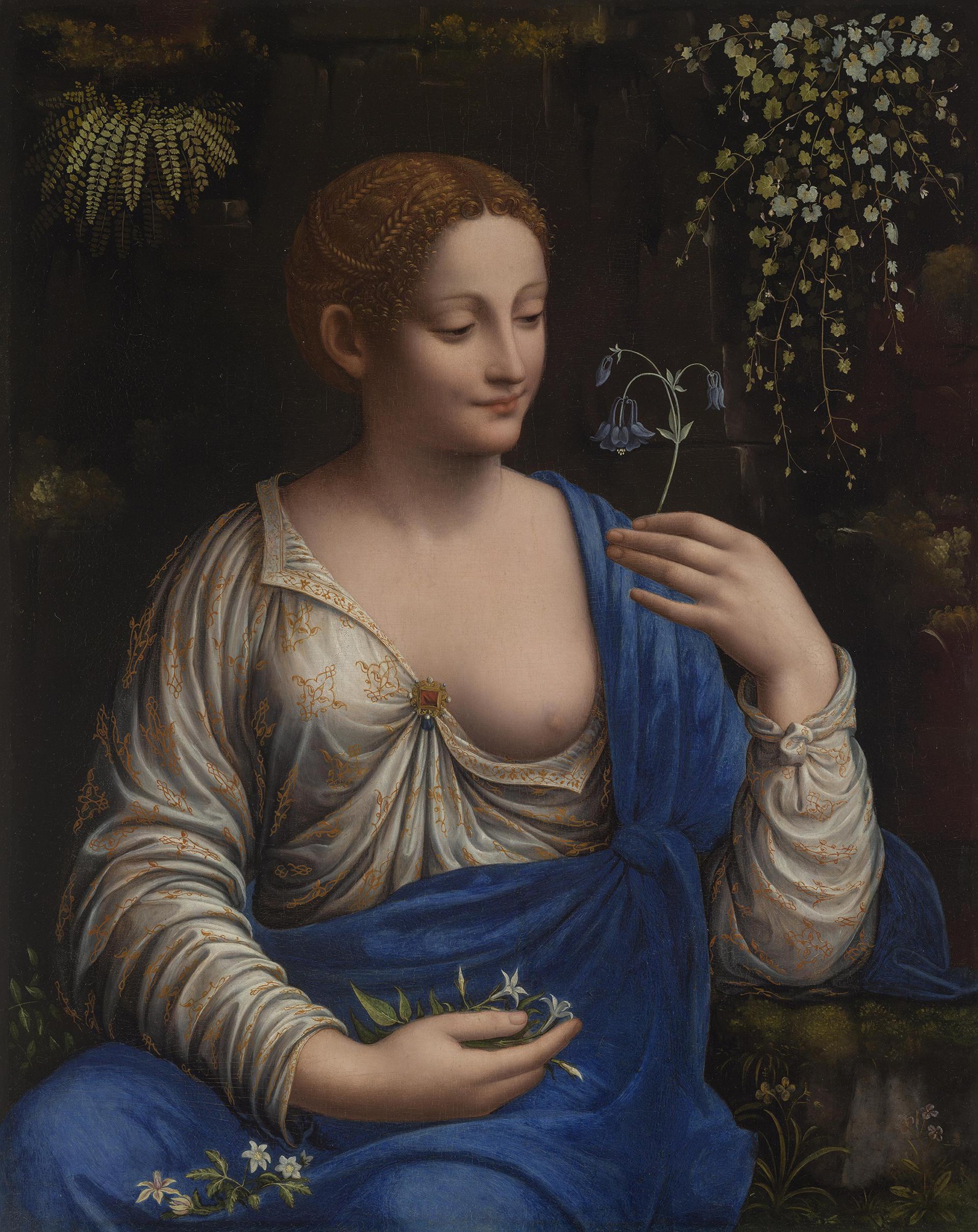|
Trattato Della Pittura
''A Treatise on Painting'' (''Trattato della pittura'') is a collection of Leonardo da Vinci's writings entered in his notebooks under the general heading "On Painting". The manuscripts were begun in Milan while Leonardo was under the service of Ludovico Sforza and gathered together by his heir Francesco Melzi. The treatise was first published in France in 1632; after Melzi's version was rediscovered in the Vatican Library, the treatise was published in its modern form in 1817. Content The main aim of the treatise was to argue that painting was a science. Leonardo's keen observation of expression and character is evidenced in his comparison of laughing and weeping, about which he notes that the only difference between the two emotions in terms of the "motion of the acialfeatures" is "the ruffling of the brows, which is added in weeping, but more elevated and extended in laughing." This manuscript contains the famous branching rule: All the branches of a tree at every stage of i ... [...More Info...] [...Related Items...] OR: [Wikipedia] [Google] [Baidu] |
Leonardo Da Vinci
Leonardo di ser Piero da Vinci (15 April 14522 May 1519) was an Italian polymath of the High Renaissance who was active as a painter, Drawing, draughtsman, engineer, scientist, theorist, sculptor, and architect. While his fame initially rested on his achievements as a painter, he also became known for #Journals and notes, his notebooks, in which he made drawings and notes on a variety of subjects, including anatomy, astronomy, botany, cartography, painting, and paleontology. Leonardo is widely regarded to have been a genius who epitomized the Renaissance humanism, Renaissance humanist ideal, and his List of works by Leonardo da Vinci, collective works comprise a contribution to later generations of artists matched only by that of his younger contemporary, Michelangelo. Born Legitimacy (family law), out of wedlock to a successful Civil law notary, notary and a lower-class woman in, or near, Vinci, Tuscany, Vinci, he was educated in Florence by the Italian painter and sculptor ... [...More Info...] [...Related Items...] OR: [Wikipedia] [Google] [Baidu] |
Ludovico Sforza
Ludovico Maria Sforza (; 27 July 1452 – 27 May 1508), also known as Ludovico il Moro (; "the Moor"). "Arbiter of Italy", according to the expression used by Guicciardini,Opere inedite di Francesco Guicciardini etc, Storia fiorentina, dai tempi di Cosimo de' Medici a quelli del gonfaloniere Soderini, 3, 1859, p. 217 was an nobleman who ruled as from 1494 to 1499. Endowed with rare intellect and very ambitious, he managed, although fourth son, to acquire dominion over ... [...More Info...] [...Related Items...] OR: [Wikipedia] [Google] [Baidu] |
Francesco Melzi
Francesco Melzi, or Francesco de Melzi (1491–1570), was an Italian painter born into a family of the Milanese nobility in Lombardy. He became a pupil of Leonardo da Vinci and remained as his closest professional assistant throughout his career. After da Vinci's death he became the literary executor of all da Vinci's papers, editing them into a manuscript on painting he published as ''Tratatto della Pittura'' reatise on Paintingor a compilation entitled the ''Codex Urbinas''. Early life and training Francesco's father, Gerolamo Melzi, was an engineer for Francesco II Sforza's military, and a captain in the militia in Milan under Louis XII. Francesco lived with his family in the Villa Melzi in Vaprio d'Adda (not to be confused with the Villa Melzi d'Eril in Bellagio, Lombardy), which today is still under the ownership of the Dukes Melzi d'Eril. Francesco grew up in the Milanese court, and was raised with proper manners and was granted a good education, which ... [...More Info...] [...Related Items...] OR: [Wikipedia] [Google] [Baidu] |
Vatican Library
The Vatican Apostolic Library ( la, Bibliotheca Apostolica Vaticana, it, Biblioteca Apostolica Vaticana), more commonly known as the Vatican Library or informally as the Vat, is the library of the Holy See, located in Vatican City. Formally established in 1475, although it is much older—it is one of the oldest libraries in the world and contains one of the most significant collections of historical texts. It has 75,000 codices from throughout history, as well as 1.1 million printed books, which include some 8,500 incunabula. The Vatican Library is a research library for history, law, philosophy, science, and theology. The Vatican Library is open to anyone who can document their qualifications and research needs. Photocopies for private study of pages from books published between 1801 and 1990 can be requested in person or by mail. Pope Nicholas V (1447–1455) envisioned a new Rome with extensive public works to lure pilgrims and scholars to the city to begin its transf ... [...More Info...] [...Related Items...] OR: [Wikipedia] [Google] [Baidu] |
Leon Battista Alberti
Leon Battista Alberti (; 14 February 1404 – 25 April 1472) was an Italian Renaissance humanist author, artist, architect, poet, priest, linguist, philosopher, and cryptographer; he epitomised the nature of those identified now as polymaths. He is considered the founder of Western cryptography, a claim he shares with Johannes Trithemius. Although he often is characterized exclusively as an architect, as James Beck has observed, "to single out one of Leon Battista's 'fields' over others as somehow functionally independent and self-sufficient is of no help at all to any effort to characterize Alberti's extensive explorations in the fine arts". Although Alberti is known mostly for being an artist, he was also a mathematician of many sorts and made great advances to this field during the fifteenth century. The two most important buildings he designed are the churches of San Sebastiano (1460) and Sant'Andrea (1472), both in Mantua. Alberti's life was described in Giorgio Vasari's ' ... [...More Info...] [...Related Items...] OR: [Wikipedia] [Google] [Baidu] |
Cennino Cennini
Cennino d'Andrea Cennini (c. 1360 – before 1427) was an Italian painter influenced by Giotto. He was a student of Agnolo Gaddi in Florence. Gaddi trained under his father, called Taddeo Gaddi, who trained with Giotto. Cennini was born in Colle di Val d'Elsa, Tuscany. After training as an artist with Agnolo Gaddi in Florence he worked at the court of Francesco Novello da Carrara in Padua for some years before apparently returning to Colle di Val d'Elsa. He is remembered mainly for having authored ''Il libro dell'arte''. Thought to have been written around the turn of the 15th century, the book is a "how to" on late Medieval and early Renaissance painting. It contains information on pigments, brushes, drawing, panel painting, the art of fresco, painting on fabrics and casting, amongst other techniques and tricks. Cennini also mentions oil painting in passing, which was important for dispelling the myth, propagated by Giorgio Vasari and Karel Van Mander, that oil painting was ... [...More Info...] [...Related Items...] OR: [Wikipedia] [Google] [Baidu] |
Max Ernst
Max Ernst (2 April 1891 – 1 April 1976) was a German (naturalised American in 1948 and French in 1958) painter, sculptor, printmaker, graphic artist, and poet. A prolific artist, Ernst was a primary pioneer of the Dada movement and Surrealism in Europe. He had no formal artistic training, but his experimental attitude toward the making of art resulted in his invention of frottage (surrealist technique), frottage—a technique that uses pencil rubbings of textured objects and relief surfaces to create images—and Grattage (art), grattage, an analogous technique in which paint is scraped across canvas to reveal the imprints of the objects placed beneath. Ernst is noted for his unconventional drawing methods as well as for creating novels and pamphlets using the method of collages. He served as a soldier for four years during World War I, and this experience left him shocked, traumatised and critical of the modern world. During World War II he was designated an "undesirable forei ... [...More Info...] [...Related Items...] OR: [Wikipedia] [Google] [Baidu] |
Cahiers D'Art
''Cahiers d'Art'' is a French artistic and literary journal founded in 1926 by Christian Zervos. ''Cahiers d'Art'' is also an eponymous publishing house which has published many monographs on artists living in France in the first half of the twentieth century. Publications include the definitive catalogue of works by Pablo Picasso, ''Pablo Picasso par Christian Zervos'', in 33 volumes, with over 16,000 images. ''Cahiers d'Art'' carries no advertising and is published on an irregular schedule. History The journal, founded by the art critic Christian Zervos in Paris at 14, rue du Dragon in 1926, was published with an interruption from 1941 to 1943, until 1960. The first post-war issue was dated 1940–1944 and focused on poets and writers from the Resistance, including Vercors. ''Cahiers d'Art'' also published selections from poet Paul Éluard's ''Open Book I'' (1940) and ''Open Book II'' (1942). After World War II, the psychoanalyst Jacques Lacan was invited by Zervos to publis ... [...More Info...] [...Related Items...] OR: [Wikipedia] [Google] [Baidu] |
Elmer Belt
Elmer Belt (April 10, 1893 – May 17, 1980) was an internationally recognized urologist, a pioneer in sex-change surgery, an important mover in the founding of the UCLA School of Medicine, and a book collector known for assembling a library of research materials about Leonardo da Vinci—the Elmer Belt Library of Vinciana—which he donated to the University of California, Los Angeles between 1961-66. Early life and education Arthur Elmer Belt was born in Chicago, Illinois on April 10, 1893. Both of his parents worked for the post office. The family moved to Southern California when Belt was nine. Elmer Belt (the form of name he preferred) received his early education in Orange County, but attended Los Angeles High School, traveling there on horseback. During high school he took courses in Latin, a medical school prerequisite, and met Ruth Smart, whom he would marry in 1918. Because Los Angeles High School was located at the top of a hill and at least an hour's walk to a shop ... [...More Info...] [...Related Items...] OR: [Wikipedia] [Google] [Baidu] |
UCLA
The University of California, Los Angeles (UCLA) is a public land-grant research university in Los Angeles, California. UCLA's academic roots were established in 1881 as a teachers college then known as the southern branch of the California State Normal School (now San José State University). This school was absorbed with the official founding of UCLA as the Southern Branch of the University of California in 1919, making it the second-oldest of the 10-campus University of California system (after UC Berkeley). UCLA offers 337 undergraduate and graduate degree programs in a wide range of disciplines, enrolling about 31,600 undergraduate and 14,300 graduate and professional students. UCLA received 174,914 undergraduate applications for Fall 2022, including transfers, making the school the most applied-to university in the United States. The university is organized into the College of Letters and Science and 12 professional schools. Six of the schools offer undergraduate degre ... [...More Info...] [...Related Items...] OR: [Wikipedia] [Google] [Baidu] |
Time-Life Books
Time Life, with sister subsidiaries StarVista Live and Lifestyle Products Group, a holding of Direct Holdings Global LLC, is an American production company and direct marketer conglomerate, that is known for selling books, music, video/DVD, and multimedia products. The current focus of the group is music, video, and entertainment experiences (such as the StarVista cruises) as the Time Life book division closed in 2001. Its products have been sold throughout North America, Europe, Australia, and Asia through television, print, retail, the Internet, telemarketing, and direct sales. Current operations are focused in the US and Canada with limited retail distribution overseas. Overview Time Life was founded in 1961 as the book marketing division of Time, Incorporated. It took its name from Time Inc.'s cornerstone magazines, ''Time'' and ''Life'', two of the most popular magazines of the era, but remained independent from both. Starting in 1967, Time Life combined its book offe ... [...More Info...] [...Related Items...] OR: [Wikipedia] [Google] [Baidu] |
.jpg)






